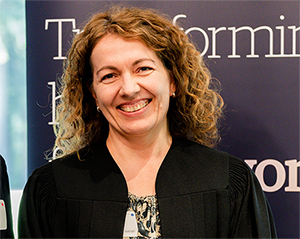
Schlade-Bartusiak, Kamilla
PhD FCCMG
Academic Rank(s): Clinical Professor, Pathology and Laboratory Medicine, UBC | Cytogenetic Laboratory, BCCH | Investigator, BC Children’s Hospital
Affiliation(s): BCCH/BCCHRI
Research and Scholarly Interests: Genetics genomics proteomics and related approaches
Clinical Interests:
Academic Background
- MSc (Molecular Genetics) University of Wroclaw, Poland, 1993-1995
- PhD (Cytogenetics) Wroclaw Medical University, Poland, 1995-2000
- Postdoctoral Fellow (Cytogenetics) Wroclaw Medical University, 2000-2003
- Postdoctoral Fellow (Medical Genetics) University of Alberta, Edmonton, 2003-2008
- CCMG Fellowship (Clinical Cytogenetics), Calgary/Vancouver, 2008-2009
- FCCMG (Clinical Cytogenetics), 2010
Awards and Recognition
Publications
Selected Publications
Research Interest
- Array applications in clinical cytogenetics
- Mechanisms of formation of chromosome aberrations
- Genotype-phenotype correlations
Chromosomal Microarry (CMA) is a technique enabling high-resolution, genome-wide screening of chromosomal imbalances. It has become and essential and routine diagnostic tool gradually replacing the lower resolution karyotype analysis. It allows for delineation of novel recurrent microdeletion/microduplication syndromes. SNP-based CMA technology allows also for detection of copy number neutral phenomena, like uniparental disomy and regions of homozygosity. As a cytogeneticist, I am interested in clinical and research applications of array technology. That includes better characterization of known and novel syndromes caused by chromosomal aberrations, as well as disease gene discovery.
Clinical Service
Current Projects In My Lab Include
Teaching Interest